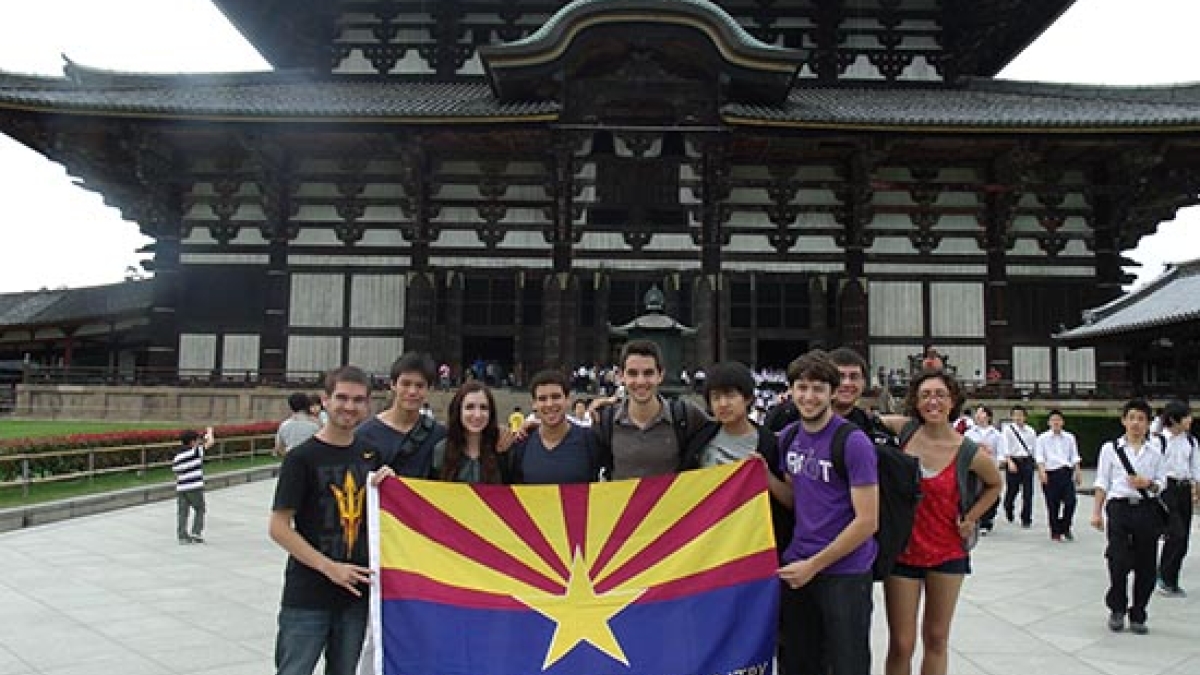ASU commits to increasing study abroad students

Arizona State University is joining Generation Study Abroad, an Institute of International Education (IIE) program that aims to double the number of U.S. college students studying in different countries by the end of the decade.
Less than 10 percent of U.S. students currently study abroad, according to the IIE. ASU is committing to increasing study abroad students by 20 percent between the fall of 2014 and fall of 2019.
“ASU is committed to graduating global citizens, and study abroad is one distinct way to encourage intercultural growth and development, throughout the world and in the local community,” said Robert E. Page, Jr., ASU Provost. “Studying abroad enhances students’ educational experiences and their understanding of different cultures and countries.”
More than 300 colleges and universities across the country have committed to increasing study abroad student numbers through the program as have study abroad organizations, foreign governments and associations. The IIE is also focusing on increasing the diversity of the students who study abroad to ensure everyone has an equal chance to participate.
“Globalization has changed the way the world works, and employers are increasingly looking for workers who have international skills and expertise,” said Allan Goodman, president of the IIE. “Studying abroad must be viewed as an essential component of a college degree and critical to preparing future leaders.”
More than 800 students are departing this summer to take part in faculty directed study abroad programs. ASU’s goal for academic year 2018-2019 is to send more than 2,000 students abroad. During the 2011-2012 academic year, 1,699 ASU students studied in other countries. Achieving this goal will be met through initiatives such as identifying potential study abroad programs; connecting courses on students’ major maps with specific destinations where the classes are offered; and including information about approved destinations and programs for each ASU major through the university’s online academic catalogue.
In addition, ASU has formed a faculty advisory committee featuring leadership from all four campuses that will integrate study abroad in all of the colleges and schools at the university, as well as provide advisement and develop international leaders. The university is also committing to exploring study abroad scholarships that will allow students to plan for their future and enhancing training for academic advisers and faculty directors in areas such as intercultural competency development.
According to the Open Doors Report on International and Educational Exchange released last November, 295,000 students studied abroad in 2011-2012, in credit- and non-credit programs. Generation Study Abroad aims to grow participation in study abroad to 600,000 students per year by the end of the decade.
Generation Study Abroad will engage educators at all levels and stakeholders in the public and private sectors to work to increase the number of U.S. students who have the opportunity to gain international experience through academic study abroad programs, as well as internships, service learning and non-credit educational experiences. The IIE has committed $2 million in funding for the initiative during the next five years.
Students at ASU have the opportunity to take advantage of over 250 summer, semester and academic year programs in more than 55 different countries. For more information about study abroad at ASU, go to https://studyabroad.asu.edu/. For more information about Generation Study Abroad, go to: www.iie.org/generationstudyabroad.